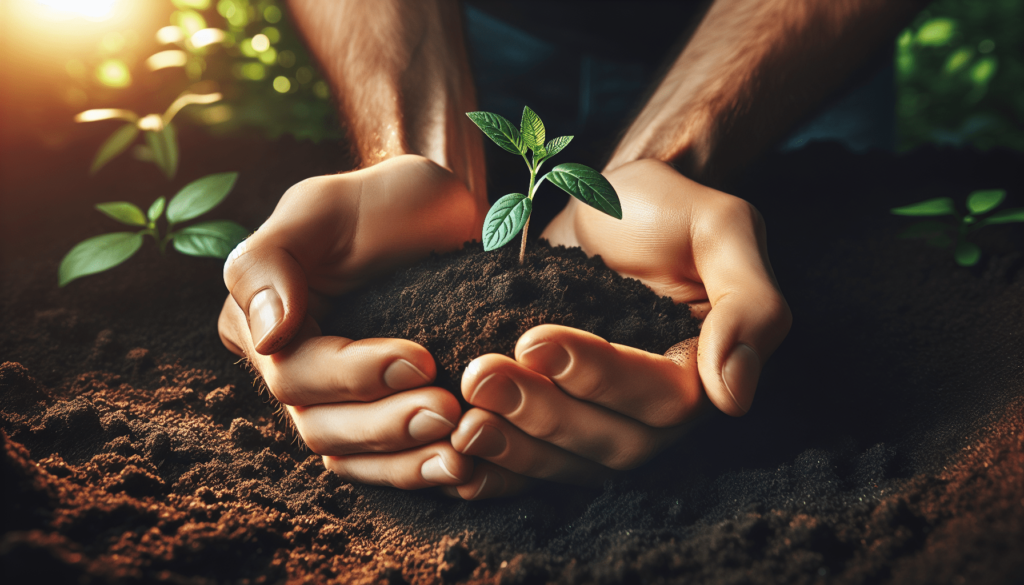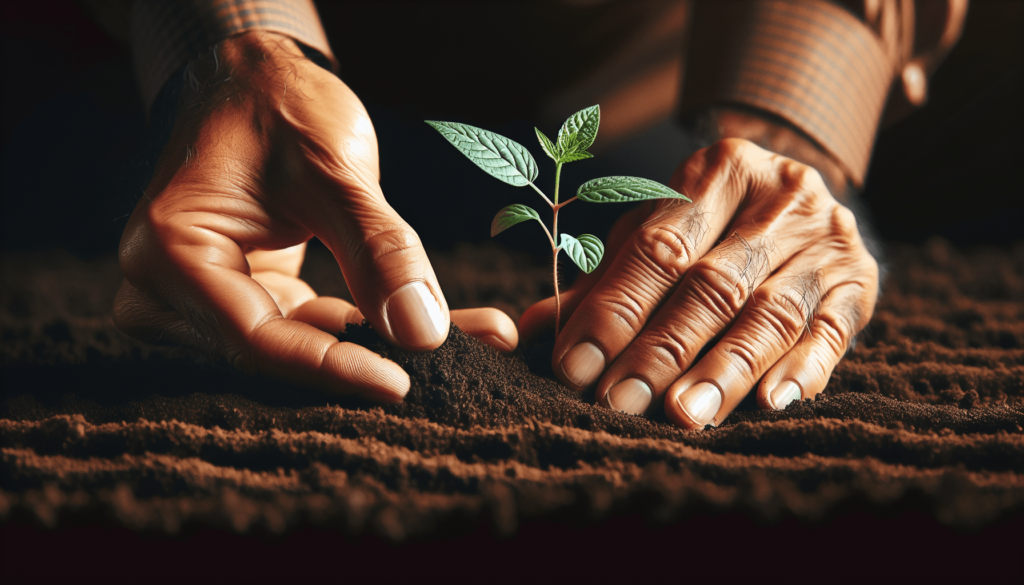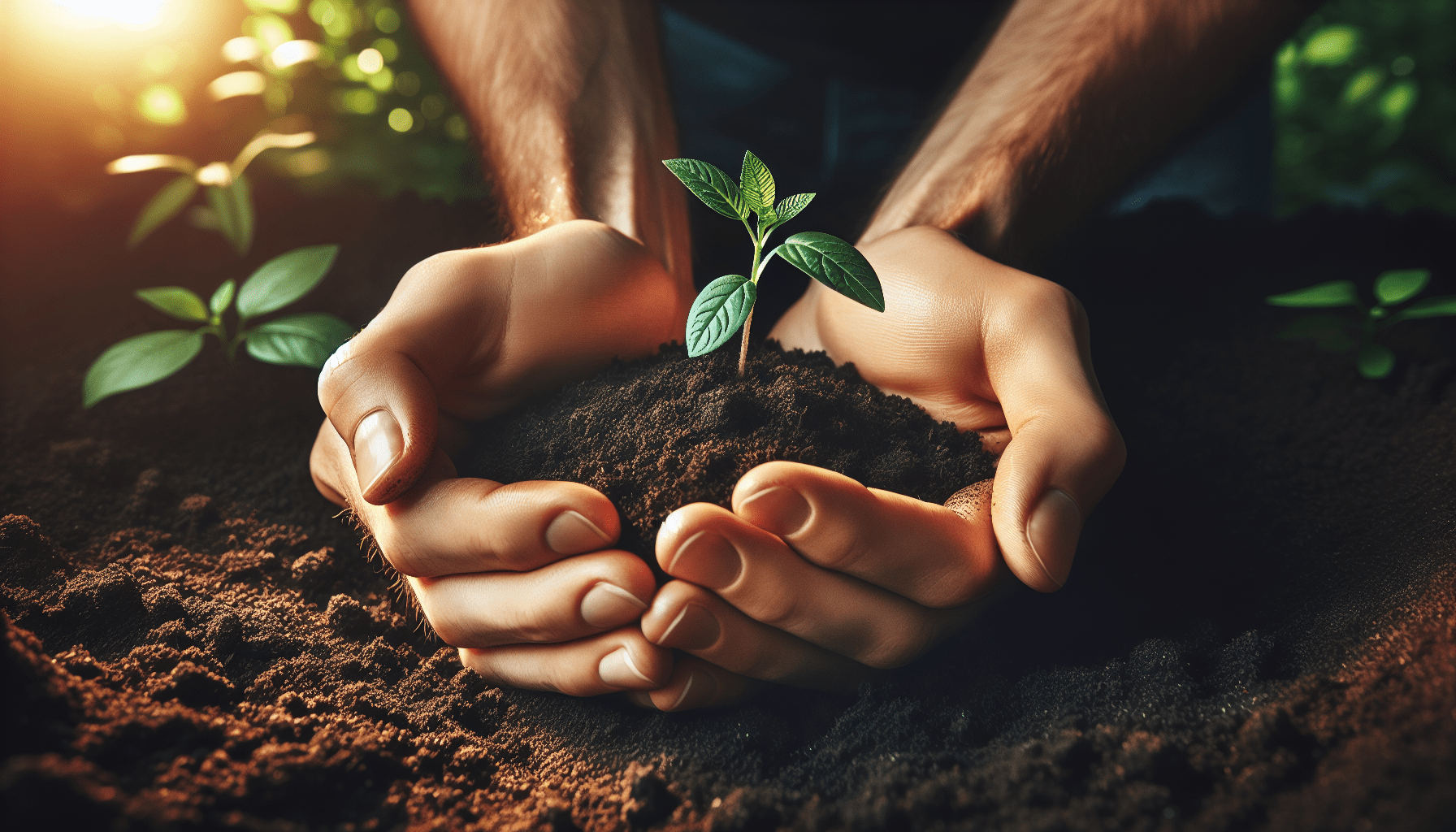Welcome to a guide on the proper way of planting! In this article, you will learn all about the key steps to ensure your plants thrive in their new home. From ensuring the right soil conditions to digging the perfect hole, follow these tips and watch your garden flourish. Let’s get started on creating a beautiful and successful garden together!
What Is The Proper Way Of Planting?
You may be wondering, “What is the proper way of planting?” Whether you are a novice gardener or looking to improve your gardening skills, knowing the right techniques for planting can make a significant difference in the health and growth of your plants. In this article, we will explore the proper way of planting various types of plants, from vegetables to flowers to trees. By following these guidelines, you can ensure that your plants thrive and flourish in your garden.
Choosing the Right Location
Before you start planting, it is essential to choose the right location for your plants. Different types of plants have specific sunlight, soil, and water requirements, so it is crucial to select a spot that meets these needs. Consider factors such as sunlight exposure, soil drainage, and proximity to structures or trees that may block sunlight or compete for resources.
When choosing a location for your plants, think about the following:
- Sunlight: Most plants require at least 6-8 hours of sunlight per day. Make sure the area you choose receives adequate sunlight for the type of plant you are growing.
- Soil: Test the soil to determine its pH level and nutrient content. Different plants thrive in different soil conditions, so it is essential to choose a location with the right soil type.
- Water: Consider the proximity to water sources such as hoses or irrigation systems. Make sure the area drains well to prevent waterlogging, which can lead to root rot.
Remember, the right location can make a significant impact on the success of your plants, so take the time to choose wisely.
Preparing the Soil
Once you have selected the right location, it is time to prepare the soil for planting. Healthy soil is essential for the growth and development of plants, as it provides the necessary nutrients and support for roots to thrive. Before planting, take the time to prepare the soil by testing its pH level, adding organic matter, and improving drainage if necessary.
To prepare the soil for planting, follow these steps:
- Test the pH level: Use a soil test kit to determine the pH level of your soil. Most plants prefer neutral to slightly acidic soil, so adjust the pH level accordingly by adding lime or sulfur.
- Add organic matter: Incorporate compost, manure, or other organic matter into the soil to improve its nutrient content and structure. Organic matter helps retain moisture and provide essential nutrients for plant growth.
- Improve drainage: If the soil is compacted or drains poorly, consider adding sand or perlite to improve drainage. Proper drainage is crucial for preventing waterlogging and root rot.
By preparing the soil before planting, you can create a healthy environment for your plants to thrive and grow.

Choosing the Right Plants
When it comes to planting, choosing the right plants is essential for a successful garden. Consider factors such as your climate, soil type, and sunlight exposure when selecting plants for your garden. Choose plants that are well-suited to your growing conditions and match your gardening goals, whether you are looking to grow vegetables, flowers, or trees.
When choosing plants for your garden, keep the following tips in mind:
- Consider your climate: Choose plants that are adapted to your local climate and growing conditions. Select cold-hardy plants for colder climates and heat-tolerant plants for warmer regions.
- Match plant to location: Select plants that thrive in the sunlight, soil, and water conditions of your garden. Choose plants that are well-suited to your growing environment for optimal growth.
- Gardening goals: Consider your gardening goals when selecting plants. Whether you want to grow vegetables for food, flowers for decoration, or trees for shade, choose plants that align with your objectives.
By choosing the right plants for your garden, you can ensure that your plants will thrive and grow in their new environment.
Planting Techniques
Proper planting techniques are crucial for the health and growth of your plants. When planting, follow these guidelines to ensure that your plants are well-established and have the best chance of thriving in your garden. Whether you are planting seeds, seedlings, or transplants, knowing the right techniques can make a significant difference in the success of your garden.
Follow these planting techniques for optimal plant growth:
- Seeds: Plant seeds at the recommended depth and spacing for the type of plant you are growing. Keep the soil moist until the seeds germinate, and provide adequate sunlight for seedling growth.
- Seedlings: When planting seedlings, dig a hole slightly larger than the root ball and gently loosen the roots before planting. Water the seedlings thoroughly after planting to help them establish in their new environment.
- Transplants: Dig a hole as deep and wide as the root ball of the transplant, and carefully remove the plant from its container. Place the transplant in the hole and backfill with soil, pressing gently to remove air pockets. Water the transplant thoroughly after planting to help it settle into its new home.
By following proper planting techniques, you can ensure that your plants are well-established and have the best chance of thriving in your garden.

Watering and Mulching
Watering and mulching are essential aspects of plant care that can significantly impact the health and growth of your plants. Proper watering ensures that plants receive an adequate supply of moisture, while mulching helps retain soil moisture, suppress weeds, and insulate plant roots from extreme temperatures. By following these guidelines for watering and mulching, you can promote healthy plant growth in your garden.
When it comes to watering and mulching, keep the following tips in mind:
- Watering: Water plants deeply and infrequently to encourage deep root growth. Check the soil moisture regularly and adjust watering frequency based on the plant’s needs and weather conditions. Avoid overwatering, as this can lead to root rot and other plant problems.
- Mulching: Apply a layer of mulch around plants to help retain soil moisture, suppress weeds, and regulate soil temperature. Use organic mulches such as straw, wood chips, or shredded leaves, and replenish as needed to maintain a consistent layer.
- Watering and mulching: Water plants thoroughly after mulching to help the mulch settle and provide moisture to the roots. Monitor soil moisture levels under the mulch and adjust watering as needed to ensure that plants receive adequate hydration.
By following proper watering and mulching practices, you can create a healthy growing environment for your plants and promote optimal growth and development.
Fertilizing and Feeding
Fertilizing and feeding are essential components of plant care that provide the necessary nutrients for plant growth and development. Different plants have specific nutrient requirements, so it is essential to choose the right fertilizer and feeding regimen for the type of plant you are growing. By following these guidelines for fertilizing and feeding, you can ensure that your plants receive the nutrients they need to thrive.
When it comes to fertilizing and feeding, keep the following tips in mind:
- Soil testing: Test the soil to determine its nutrient content and pH level. Use the results to choose the right fertilizer and feeding regimen for your plants.
- Organic vs. synthetic fertilizers: Consider using organic fertilizers such as compost, manure, or fish emulsion for a more sustainable and environmentally friendly option. Synthetic fertilizers provide rapid nutrient uptake but may require more frequent applications.
- Feeding schedule: Follow a regular feeding schedule based on the type of plant you are growing. Consider applying a balanced fertilizer in spring and fall and supplementing with additional nutrients such as nitrogen, phosphorus, and potassium as needed.
By fertilizing and feeding your plants properly, you can provide the necessary nutrients for optimal growth and development and ensure that your plants thrive in your garden.
Pest and Disease Control
Pest and disease control are essential aspects of plant care that can help prevent damage and ensure the health of your plants. Different types of pests and diseases can affect plants, so it is essential to monitor for signs of infestation and take proactive measures to control pests and diseases. By following these guidelines for pest and disease control, you can protect your plants and promote their growth and development.
When it comes to pest and disease control, keep the following tips in mind:
- Monitor for pests: Regularly inspect plants for signs of pests such as chewed leaves, distorted growth, or visible insects. Identify the type of pest affecting your plants and choose the appropriate control method.
- Natural control: Consider using natural predators, such as ladybugs or praying mantises, to control pest populations in your garden. Avoid using chemical pesticides that can harm beneficial insects and pollinators.
- Disease prevention: Practice good sanitation by removing infected plant material and debris from the garden. Avoid overhead watering and provide adequate air circulation to prevent fungal diseases such as powdery mildew and leaf spot.
By implementing proper pest and disease control measures, you can protect your plants from damage and support their growth and development in your garden.
Harvesting and Maintenance
Harvesting and maintenance are essential aspects of plant care that can help prolong the lifespan of your plants and ensure a bountiful harvest. Different types of plants require specific care and maintenance tasks, so it is crucial to follow the right techniques for harvesting and maintaining your plants. By following these guidelines for harvesting and maintenance, you can enjoy healthy plant growth and successful harvests in your garden.
When it comes to harvesting and maintenance, keep the following tips in mind:
- Harvesting: Harvest crops at the right time to ensure optimal flavor and quality. Use clean, sharp tools to harvest fruits and vegetables without damaging the plant. Store harvested produce properly to maintain freshness and flavor.
- Pruning: Prune plants regularly to remove dead or diseased growth, promote air circulation, and improve sunlight penetration. Use clean, sharp tools to avoid spreading disease and disinfect tools between plants.
- Maintenance tasks: Perform regular maintenance tasks such as weeding, watering, and fertilizing to keep your plants healthy and thriving. Monitor for signs of pests and diseases and take proactive measures to control infestations.
By following proper harvesting and maintenance practices, you can prolong the lifespan of your plants, ensure a bountiful harvest, and enjoy healthy plant growth in your garden.
Conclusion
In conclusion, knowing the proper way of planting is essential for successful gardening and healthy plant growth. By choosing the right location, preparing the soil, selecting the right plants, and following proper planting techniques, you can create a healthy environment for your plants to thrive and flourish in your garden. Remember to water and mulch your plants, fertilize and feed them, control pests and diseases, and perform regular maintenance tasks to ensure optimal plant growth and development. By following these guidelines for proper planting, you can enjoy a bountiful harvest and beautiful garden that brings you joy and satisfaction. Happy gardening!
